As sailing cruisers, we strive to be “Green” by reducing our carbon footprint whenever possible, and reducing our dependence on fossil fuels. We are officially an “auxiliary-powered sailboat” – meaning that sails are our primary propulsion, and our Yanmar diesel engine is considered the auxiliary power. Beyond propulsion, a cruising sailboat has lots of other things that require power – lights, refrigeration, water pumps, autopilot, navigation instruments, water-maker, outlets for charging cell phones – to name a few. We are a “12 Volt boat”, so the vast majority of our systems run off power stored in our 12V batteries. Our battery bank is comprised of four 225 Amp Hr AGM house batteries and one dedicated engine start battery, and is charged and replenished by the engine alternator when we’re motoring, and 110V power when we’re dockside. Our batteries can also be charged with a generator, solar power, or wind power.
When we commissioned KINETIC in Fall 2015 we opted not to install a diesel generator, but to install wind and solar power to see how we could get by. This blog is about the evolution of KINETIC’s power generation and our lessons learned.
Wind
In preparation for our first 2-month cruise in the summer of 2016, we installed a wind generator that looked great on paper and at the boat show, but never really performed to specs. When the boat heeled, the blades “spun out”, so it was virtually useless underway. Customer service was less than satisfactory, and within a year, the unit stopped producing any power at all. We were cruising the Caribbean at the time and had the unit bench tested by a reputable technician, but couldn’t open it up to make a repair without violating the warranty – the company wanted it sent back to the factory. Since we had 5 months remaining on our winter cruising plan, we packed up the unit and agreed to ship it back upon return to the US. Long story short, we lost the unit, our money, and faith in that company.
Lesson learned: install equipment that has a good track record with cruisers, and can be repaired/replaced in your cruising grounds.
The good news is that we replaced that unit with a 12V SilentWind 400, purchased at Island Water World (IWW) in St Martin in Jan 2017. This model was recommended by cruising friends and the IWW manager, who had one on his on boat. SilentWind is based in Portugal, but has technicians in the Caribbean and US. IWW has a number of chandleries throughout the Caribbean, and they carry SilentWind units and spare parts. (One lesson learned well). This unit was easy to install, and had a controller operated by a cell phone app and Bluetooth connection. The Bluetooth controller was new on the market, and did have a learning curve and some growing pains, to which SilentWind responded promptly with updates and eventually an updated controller. Our SilentWind started producing power immediately, consistently, and quietly! Of course it produces some sound, and we can generally estimate the wind speed by the pitch of the SilentWind. We call it the “sound of power”.
The “400” means our SilentWind 400’s max output is 400 watts at about 30 knots of wind. The 400 watts is measured at the generator, and is reduced by the various connections to controller, batteries, etc. It makes more sense to measure amps, which are accepted into our batteries – so 400 watts / 12 volts = 33 amps. Using the app, we can see how much power is being read by the controller, before it goes into the battery bank. On a typical tradewinds day with 15-17 knots of wind, our SilentWind inputs 18 amps into our battery bank. Considering that the trades blow all day and all night, that’s a significant input! When sailing to windward, our apparent wind is increased, and consequently our wind power generation. Sailing downwind, or when apparent wind is less than 10 knots (ie sheltered anchorage), our wind power generation is negligible.
Over the past 28 months of cruising, we’ve been really happy with our SilentWind. When we encountered issues (some of them operator error), SilentWind’s tech support helped us troubleshoot and gave us explicit illustrated directions on how to remedy the issue, and even scheduled a video call to show us how to take apart the unit for cleaning. We can’t say enough about the outstanding customer support, and we even named our unit “Sam” after our favorite SilentWind engineer.
Solar
Before heading to the Caribbean in Fall 2016, we installed a 140 Watt Solbian flexible solar panel (from Climate Control) onto our Sunbrella bimini. Our bimini was designed a bit smaller than some; less crown to facilitate boarding and dinghy outboard storage, and less length to give easy access to our boom and sail. A larger bimini would yield more “real estate” for solar panels, but we opted differently. Our solar panel is secured by double-backed Velcro on all 4 sides, and the power cable is enclosed in a reinforced Sunbrella sleeve with a quick-disconnect. In storm conditions, the panel can be easily detached and stowed belowdecks. The wires run down the same stainless post that hosts the SilentWind generator, and the controller is installed near the battery bank, at the nav station.
The solar panel’s 140 watt rating assumes ideal conditions. Like any electrical device, output is lost at all connections along the way to the battery. On a sunny Caribbean day, our solar panel inputs about 5 amps into the batteries for 6-8 hours. Power is consistent, reliable, and silent – but requires a sunny day. We’ve never had an issue with our solar panel or controller, and only wish we had loaded the bimini with more panels. Next design, we will.
Lesson learned: maximize your available “real estate” with high efficiency solar panels, and incorporate that into the bimini design. For more details, install your controller where you can read the power output.
Diesel Generator
After Hurricanes Irma and Maria ravaged the Caribbean island in September 2017, we were unsure if we’d be able to cruise the Caribbean that winter season. Security was restored fairly quickly, but we didn’t want to be a drain on already scarce resources – food, water, fuel, electricity. We decided that Antigua was a viable destination since it was relatively unharmed by the hurricanes, so we scheduled our passages, courses, and family visits accordingly. And we added two major bits of gear to KINETIC. The first was a 6 KW Northern Lights diesel generator, to supplement the wind and solar, and to reduce the number of engine hours required to get a full charge on the batteries. Fortunately, we had KINETIC wired and plumbed for a generator during the build, in the event we (or her next owners) wanted to install one after commissioning.
As we had experienced freshwater shortages the prior year in Antigua, and not knowing the water situation on other post-hurricane islands, we decided to add a watermaker, too. Given the short notice, we opted for a portable Rainman unit, which required 110V power. Now that we had a generator, we were set! The Rainman worked well, but after the season we realized we’d like a permanently installed unit, and opted for a 12V Spectra 200T that did NOT require a generator. Back to our theme of being a 12V boat.
Complementary Redundancy
When cruising, we prefer anchorages to marinas, so we want to remain charged when away from shore power. On an average sunny day anchored in the tradewinds, our wind and solar power keep KINETIC charged nicely. On light wind and/or cloudy days, we need to run the diesel generator to keep charged. When daysailing and island-hopping, we typically run the engine in and out of port until the sails are set, so the 2x120Ah alternators take care of charging the batteries. On multi-day passages where we’re running electronics 24 hours per day under sail, solar and wind go a long way to charging the batteries, and we may or may not need to supplement that with the diesel generator. Call it complementary, call it redundancy – we have multiple means to keep our batteries charged.
We could produce lots more power with diesel generation, running air-conditioning at anchor and maximizing electrical appliances. We prefer, however, to reduce our power requirements and live within our solar and wind capabilities, reducing our carbon footprint and overall running costs. It just feels better.









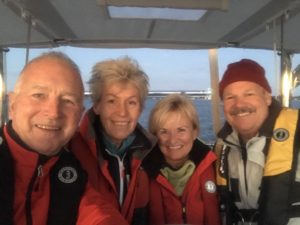
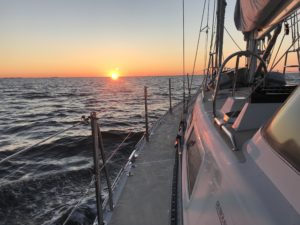









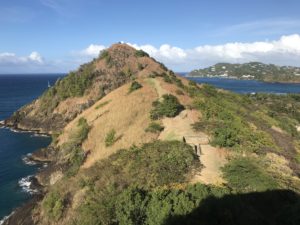

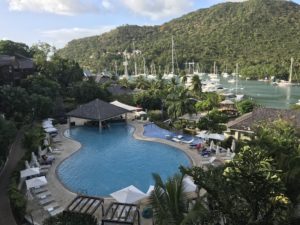


























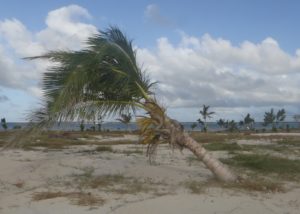







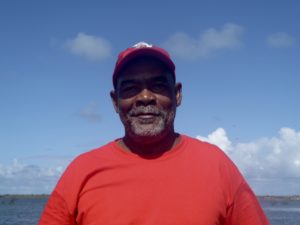

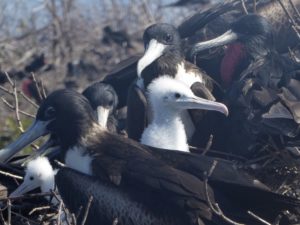





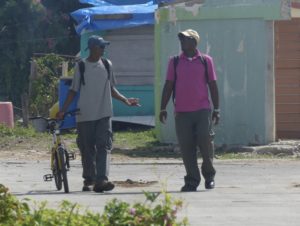


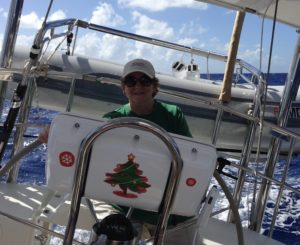












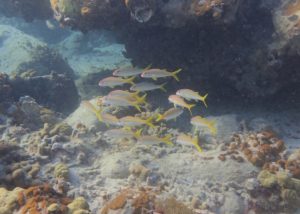










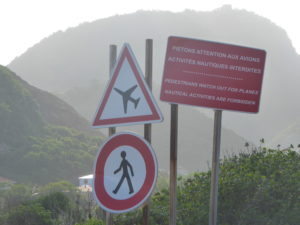






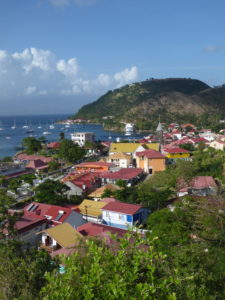

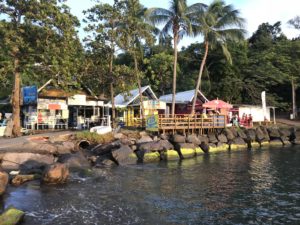


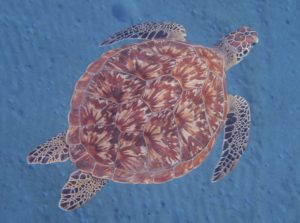

















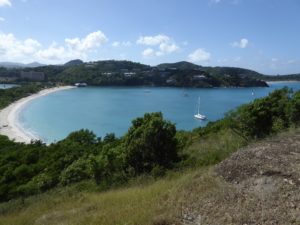
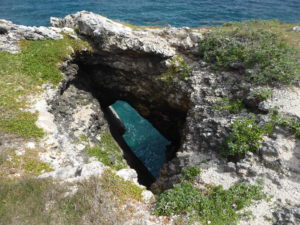







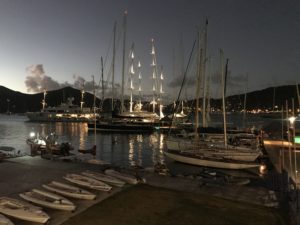









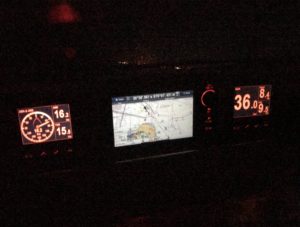







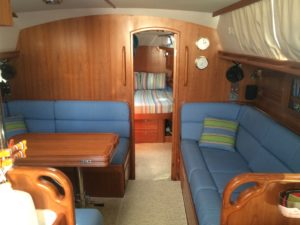











 Marine Weather Sailing Course
Marine Weather Sailing Course Coastal Navigation Sailing Course
Coastal Navigation Sailing Course










